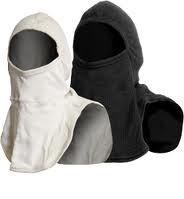Flight crews and flight crew personnel have some of the most dangerous jobs in the world. Not only do they put their lives in their own hands every time they leave the ground and take flight, but they are subject to a number of risks and liabilities involved with the operation of their equipment. For this reason, it is absolutely imperative that they have the best possible safety equipment: among the most important being the flight suit. These pieces of clothing will help protect flight crews from intense heat and potentially fatal fires which can often be associated with aircraft and the jet fuel used to propel these crafts.
There are a number of different types of flight suits made from many different materials available for flight crews. Two of the best in the industry are PBI and Nomex. Both of these flight suits are composed of fire resistant fibers which are actually weaved into the material of the flight suits, making them provide superior flame resistant protection as well as comfort, breathability, and versatility. Fire resistant fibers and fabrics are essential to Air Force personnel because of the type of jet fuel and fires they may potentially be exposed to. The fire resistant fibers are crucial in not only helping to protect personnel from flame and fire, but from keeping clothing from making injuries or burns worse by melting or adhering to the skin. Not only must the fabric prevent further injury to personnel, but it must be wearable and durable.
When comparing the two different types of fabrics, particularly in terms of which one is the best, there have been substantial tests performed to determine which type will provide the best protection. Scientific studies have tested the flammability, mechanical, and comfort of the two different types of flight suits.

The overall findings showed that PBI outperformed Nomex flight suits. When exposed to JP-4 Fuel fires, the PBI flight suits were less damaged overall by 21%. They also rated higher in comfort and mechanics than Nomex flight suits. The tests were performed on a variety of different Nomex and PBI flight suits, though conditions were attempted to be maintained at a regular ambient temperature so as not to impact the results.
During the tests, mannequins were dressed in the PBI and Nomex flight suits and doused with 25 gallons of jet fuel. The temperatures of the fires were recorded, and the intensity was monitored carefully throughout the entire experiment with several temperature sensitive strips being placed on the surfaces of each mannequin. After several tests were performed and data logged, it showed that under the same conditions, PBI flight suits outperformed the Nomex suits by a significant amount.
PBI flight suits were originally conceived by the U.S. Air Force based on the Nomex flight suits. While the two fabrics are extremely similar in construction, PBI has been used for several decades as a cleaner, sharper, more comfortable, and more durable fabric with the added protection of fire resistance. The mechanical characteristics of the two fabrics are fairly similar, however they are constructed a bit differently.
With that being said, while PBI flight suits were rated better overall, there were some categories in which Nomex performed better during testing. In these tests, Nomex flight suits were more abrasion resistant (less wear and tear from frequent rubbing and friction) than PBI flight suits. And while both Nomex and PBI weigh the same per yard of fabric, Nomex tends to be thinner fabric overall. The moisture regainability as well as the breathability of PBI, however, was leaps and bounds ahead of Nomex in terms of testing, making it more comfortable and wearable overall than Nomex, as well as helps lend itself to the fire resistance of the fabric. In lab tests, PBI fabric would maintain heat and glow time when exposed to jet fuel for only 1 second, wheras Nomex maintained heat and glowed molten for 9 seconds. The 8-second difference can be long enough to mean the difference between minor injury and fatality in the grand scheme.
When it comes to flame resistant flight suits, there are two top contenders among those on the market. The tools of the trade for flight crew personnel are these flight suits, and wearing the most protective clothing possible can quite literally mean the difference between life and death. In a study pitting the two top brands, Nomex and PBI, against each other, PBI outperformed Nomex. PBI fabric showed a 21% better resistance to heat and damage, as well as rated as more comfortable, wearable, and durable in the long term.
So you may be wondering why Nomex is the predominant fabric used for manufacturing flight suits and not PBI. The answer is that PBI is more expensive to produce then Nomex and because the flame resistant capability of Nomex meets the US Defense Force requirements there is no need to spend the additional cost.
This article was written by Mark Gordon who is the marketing manager at Carter Industries Inc. To learn more about Carter Industries and the products they produce go to Nomex Flight suits.
